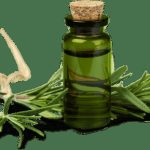Are you tired of reaching for over-the-counter pain relievers every time a headache strikes? If so, you may be searching for a natural alternative that can provide effective relief. Look no further than the power of aromatherapy. By harnessing the healing properties of essential oils, aromatherapy has proven to be a valuable tool in alleviating headaches and promoting overall well-being.
Aromatherapy is more than just a pleasant scent or fragrance. It is a holistic approach that utilizes aromatic plant extracts known as essential oils to enhance physical, mental, and emotional health. These oils are derived from various parts of plants, such as flowers, leaves, stems, roots, and fruits. When inhaled or applied topically, the therapeutic compounds in these oils interact with our body’s systems to provide relief from different ailments, including headaches.
The effectiveness of aromatherapy in headache relief lies in its ability to target the underlying causes and symptoms. Whether it’s tension headaches caused by stress or migraines triggered by certain foods or environmental factors, specific essential oils can help address these issues. By incorporating aromatherapy into your headache management routine, you can experience the benefits of natural healing alongside traditional methods.
Types of Headaches
Different types of headaches have different causes and triggers, making it essential to identify the specific culprits in order to effectively treat and prevent them. The three most common types of headaches are tension headaches, migraines, and sinus headaches.
Tension headaches are the most common type and are often caused by stress, poor posture, or muscle tension in the neck and shoulders. They typically cause a dull ache or pressure on both sides of the head. Common triggers for tension headaches include stress, anxiety, fatigue, eyestrain, and caffeine withdrawal.
Migraines are severe headaches that can be accompanied by other symptoms such as nausea, vomiting, sensitivity to light or sound, and visual disturbances. The exact cause of migraines is not fully understood but they may be triggered by certain foods or beverages (such as chocolate, cheese, alcohol), hormonal changes in women (such as during menstruation), bright lights or loud sounds, strong smells (perfumes), and emotional factors.
Sinus headaches occur when the sinuses become inflamed due to allergies or an infection such as a cold or sinusitis. These headaches typically cause pain and pressure in the forehead region, around the eyes and cheeks. Common triggers for sinus headaches include allergies (to pollen, dust mites), infections (colds), changes in air pressure (during flights), irritants like smoke or strong odors.
Identifying the type of headache one is experiencing is important because treatment methods can vary depending on the type. For example, tension headaches may respond well to relaxation techniques like aromatherapy or massages to alleviate muscle tension. Migraines may require more targeted approaches such as avoiding trigger foods and managing stress levels.
Sinus headaches may benefit from using essential oils with decongestant properties like eucalyptus oil for relief. By understanding the specific culprit behind your headache you can better apply appropriate remedies for relief based on its root cause.
| Type of Headache | Main Symptoms | Main Triggers |
|---|---|---|
| Tension Headaches | Dull ache or pressure on both sides of the head | Stress, anxiety, fatigue, eyestrain, caffeine withdrawal |
| Migraines | Severe headache accompanied by nausea, vomiting, sensitivity to light or sound, visual disturbances | Certain foods or beverages (chocolate, cheese, alcohol), hormonal changes in women (menstruation), bright lights or loud sounds, strong smells (perfumes), emotional factors. |
| Sinus Headaches | Pain and pressure in the forehead region, around the eyes and cheeks. | Allergies (pollen,dust mites), infections(colds) changes in air pressure(during flights ), irritants like smoke or strong odors. |
How Aromatherapy Works
Aromatherapy works by harnessing the healing properties of essential oils, which are concentrated compounds extracted from plants. When these oils are inhaled or applied topically, they can interact with the body’s nervous system and provide relief for headaches.
The science behind aromatherapy lies in the olfactory system, which is responsible for our sense of smell. When we inhale essential oils, the odor molecules travel through the nasal cavity and stimulate the olfactory receptors. These receptors send signals to the limbic system, which is a part of the brain associated with emotions and memory.
The limbic system plays a crucial role in regulating pain perception and emotional responses. By activating certain parts of the limbic system, essential oils can influence these processes and provide relief from headaches. For example, lavender oil has been shown to have calming effects on both the mind and body, making it effective for stress-induced headaches.
In addition to their influence on the limbic system, essential oils also have direct effects on the body. Many essential oils contain chemical compounds that have analgesic (pain-relieving) and anti-inflammatory properties. These compounds can help alleviate headache symptoms by reducing inflammation in blood vessels or blocking pain signals in the central nervous system.
Overall, aromatherapy works by combining psychological and physiological mechanisms to provide headache relief. It not only addresses physical pain but also promotes relaxation and stress reduction, which are often contributing factors to headaches.
| Aromatherapy Mechanisms | Effects |
|---|---|
| Activation of Olfactory System | Stimulates limbic system for emotional regulation |
| Analgesic Properties | Blocks pain signals in the central nervous system |
| Anti-inflammatory Properties | Reduces inflammation in blood vessels |
Understanding the mechanisms by which aromatherapy works can help individuals make informed choices when selecting essential oils for headache relief. Different oils may have varying effects and it is important to consider personal preferences and individual responses when utilizing aromatherapy as a natural remedy for headaches.
Top Essential Oils for Headaches
Aromatherapy has gained popularity as a natural and effective remedy for various health issues, including headaches. Essential oils have been used for centuries to alleviate pain and promote relaxation. In this section, we will analyze the best essential oils for headaches based on their benefits and effectiveness.
- Lavender oil: Widely recognized for its calming and soothing properties, lavender oil is a popular choice for headache relief. It can help reduce tension and anxiety, making it beneficial for both stress-related headaches and migraines. Additionally, lavender oil has sedative effects that can aid with sleep, which is often disrupted by headaches.
- Peppermint oil: Known for its cooling sensation, peppermint oil offers analgesic properties that make it effective in relieving headaches. It can help relax muscles and improve blood flow, making it particularly useful for tension headaches. The menthol component of peppermint oil provides a refreshing sensation that can also alleviate nausea associated with migraines.
- Eucalyptus oil: If you frequently experience sinus headaches or congestion along with your headache, eucalyptus oil may provide relief. This essential oil helps open up congested nasal passages, allowing better airflow and reducing pressure in the sinuses. By promoting sinus drainage, eucalyptus oil can contribute to alleviating the underlying cause of sinus headaches.
- Rosemary oil: With its pleasant aroma and soothing properties, rosemary oil is known to relieve tension and promote relaxation. It has been used traditionally to ease muscle pain and stiffness associated with tension headaches. Rosemary oil may also help improve circulation, thus enhancing oxygen flow to the brain and potentially reducing headache frequency.
- Chamomile oil: Chamomile is widely recognized as a calming herb that promotes relaxation in both mind and body. Chamomile oil possesses anti-inflammatory properties that can aid in reducing headache-induced inflammation or swelling. Its calming effects may also help alleviate anxiety and stress-related headaches.
- Frankincense oil: Stress is a common trigger for headaches, and frankincense oil has been used traditionally for its soothing and grounding effects. By promoting feelings of relaxation, this essential oil can help reduce stress levels and potentially prevent headache episodes. Frankincense oil may also aid in improving sleep quality, reducing further triggers for headaches.
When using essential oils for headache relief, it’s crucial to remember that individual preferences and responses may vary. Some people may find certain oils more effective than others based on their unique chemical makeup and personal sensitivities. It’s recommended to experiment with different oils and techniques to find the best one that works for you.
In the next section, we will explore the various techniques and applications of aromatherapy oils for headaches, including inhalation methods and topical application. Safety precautions and dilution guidelines will also be discussed to ensure the proper use of essential oils for maximum effectiveness and minimal risks.
How to Use Aromatherapy Oils
Aromatherapy oils can be used in various ways to alleviate headaches and promote relaxation. There are several techniques and applications that can maximize the benefits of these oils.
One popular method of using aromatherapy oils is inhalation. Steam inhalation involves adding a few drops of essential oil to a bowl of hot water and inhaling the steam as you cover your head with a towel. This method allows the aroma to stimulate your olfactory system, which can have a calming effect on headaches.
Another option is using a diffuser, which disperses the essential oil into the air for you to breathe in gradually. Personal inhalers are also available, allowing you to carry your favorite essential oil blend with you wherever you go.
In addition to inhalation, topical application can also be effective in relieving headaches. Massaging essential oils onto your temples, forehead, or neck can help reduce tension and promote relaxation. Compresses can also be used by soaking a cloth in warm or cold water infused with a few drops of essential oil, then applying it to the affected area. Adding a few drops of essential oil to your bathwater is another method for promoting relaxation and headache relief.
While using aromatherapy oils can provide numerous benefits, it’s important to take safety precautions when handling and applying them. Essential oils are highly concentrated and should always be diluted before use. It’s recommended to use carrier oils such as jojoba or coconut oil as dilution agents. The general guideline is 2-3 drops of essential oil per teaspoon of carrier oil for adults.
By understanding these techniques and applications, individuals can maximize the potential benefits of aromatherapy oils for headache relief. Experimenting with different methods and finding what works best for you can help create a personalized approach to managing headaches through aromatherapy.
Individualizing Aromatherapy
Discussing personal preferences and individual responses
When it comes to aromatherapy for headaches, finding the perfect oil for you is a highly personalized process. Each individual may have different preferences and responses to certain oils, so it’s important to experiment and find what works best for your unique needs.
Some people may find relief with lavender oil, while others may respond better to peppermint or eucalyptus oil. Understanding your own preferences and reactions can help guide you in finding the most effective aromatherapy oil for your headaches.
Highlighting the importance of experimentation and adjusting techniques
Experimentation is key when it comes to individualizing aromatherapy for headaches. It’s necessary to try out different oils and observe how your body responds to each one. You may find that a certain oil provides quick relief, while others require more time or a higher concentration.
Additionally, adjusting techniques such as inhalation methods or topical application can also make a difference in the effectiveness of aromatherapy for headaches. Some individuals may prefer steam inhalation, while others might find compresses or massages more soothing. Being open to trying different approaches can help you discover the perfect oil and technique combination for your specific headache needs.
Taking into account safety precautions and dilution guidelines
While exploring different aromatherapy oils for headaches, it’s essential to keep safety precautions and dilution guidelines in mind. Essential oils are potent substances that should be used with caution. Always follow dilution guidelines recommended by reputable sources to avoid potential skin irritation or adverse reactions.
Additionally, some oils may not be suitable for children, pregnant individuals, or those with certain medical conditions. It’s crucial to consult with a healthcare professional before using aromatherapy oils if you fall into any of these categories. By prioritizing safety and following proper guidelines, you can safely individualize your aromatherapy experience and find the perfect oil for your headache relief.
Additional Tips for Natural Headache Relief
Lifestyle changes: stress management, hydration, and sleep
When it comes to finding natural relief for headaches, making certain lifestyle changes can greatly contribute to reducing their frequency and severity. Stress is often a major trigger for headaches, so incorporating effective stress management techniques into your daily routine can make a significant difference. This might include practices such as deep breathing exercises, regular exercise, meditation, and engaging in activities that promote relaxation.
Hydration is another important factor to consider in headache prevention. Dehydration can often lead to headaches or make them worse. It’s essential to drink enough water throughout the day and maintain proper hydration levels. Additionally, ensuring that you get sufficient quality sleep is crucial. Lack of sleep or poor sleep patterns can increase the likelihood of developing headaches. Establishing a consistent sleep schedule and creating a relaxing environment conducive to restful sleep can help alleviate headaches.
Dietary considerations: potential triggers to avoid
Taking a closer look at your diet can also be beneficial in relieving and preventing headaches. Certain foods and beverages are known to trigger headaches in some individuals. Common culprits include processed meats, aged cheeses, chocolate, caffeine, alcohol, artificial sweeteners like aspartame, and foods containing monosodium glutamate (MSG).
Keeping track of your food intake through a headache diary can help identify any patterns or triggers specific to you. Once these triggers are pinpointed, avoiding or limiting consumption of these substances may reduce the frequency and intensity of your headaches.
Complementary therapies: acupuncture, yoga, and meditation
In addition to aromatherapy oils, there are several complementary therapies that have been found helpful in managing headaches. Acupuncture is an ancient Chinese practice involving the insertion of thin needles into specific points on the body believed to regulate energy flow. Numerous studies have shown that acupuncture can provide relief from migraines and tension headaches by releasing endorphins and increasing blood flow.
Yoga and meditation are also effective practices for reducing headache frequency and intensity. Both practices promote relaxation, stress reduction, and improved body awareness. Regular yoga sessions can help decrease muscle tension and improve flexibility, while practicing meditation can calm the mind and alleviate mental stress that often contributes to headaches.
Incorporating these complementary therapies into your routine in conjunction with aromatherapy oils can provide a holistic approach to natural headache relief. It is essential to explore what works best for you as an individual, as each person may respond differently to various techniques.
Precautions and Side Effects
While aromatherapy can be a powerful tool for headache relief, it is essential to be aware of the potential precautions and side effects associated with using aromatherapy oils. While generally considered safe when used properly, there are some risks to consider.
First and foremost, it is important to note that some individuals may have allergies or sensitivities to certain essential oils. Before using any aromatherapy oil, it is recommended to perform a patch test on a small area of skin to check for any adverse reactions. Additionally, individuals with asthma or other respiratory conditions should exercise caution when using aromatherapy oils that can be strong and potentially trigger breathing difficulties.
Pregnant women should also take precautions when using aromatherapy oils. Some oils, such as basil, clary sage, and rosemary, are considered uterine stimulants and should be avoided during pregnancy. It is always wise to consult with a healthcare professional before incorporating any new therapies or products into your routine, especially if you are pregnant or have any underlying medical conditions.
Another consideration when using aromatherapy oils is the potential for photosensitivity. Some essential oils, particularly citrus oils like lemon and bergamot, can increase sensitivity to sunlight and may cause skin irritation or discoloration when exposed to UV rays. It is advisable to avoid direct sun exposure after applying these oils topically.
Conclusion
In conclusion, aromatherapy has proven to be a powerful tool in the relief of headaches. By understanding the different types of headaches and their triggers, individuals can identify the best essential oils to address their specific needs. Lavender oil is a popular choice for its multitude of benefits, including relaxation and stress reduction.
Peppermint oil provides a cooling effect and analgesic properties, making it effective in alleviating tension headaches. Eucalyptus oil offers relief for sinus headaches and congestion, while rosemary oil is known for its soothing properties and tension release. Chamomile oil provides anti-inflammatory benefits and calming effects, while frankincense oil helps reduce stress and prevent headaches.
Knowing how to use these oils is crucial in maximizing their effectiveness. Inhalation methods such as steam inhalation, diffusers, and personal inhalers allow the oils to directly interact with the nervous system. Topical application through massages, compresses, and baths also proves beneficial. However, it is important to follow safety precautions when using aromatherapy oils, such as proper dilution guidelines.
Finding the perfect aromatherapy oil for individual needs may require some experimentation. Personal preferences and responses vary from person to person, so it is important to explore different options and adjust techniques accordingly. It is also worth considering complementary therapies like acupuncture, yoga, and meditation for additional natural headache relief.
While aromatherapy can offer significant benefits in headache relief, it is important to be mindful of potential risks. Some individuals may have allergies or sensitivities to certain essential oils. Consultation with a healthcare professional is advised before using aromatherapy oils during pregnancy or if there are any underlying medical conditions.
Frequently Asked Questions
Is lavender or peppermint oil better for headaches?
Both lavender and peppermint oil have been known to provide relief for headaches, although the effectiveness may vary from person to person. Lavender oil is often praised for its calming and soothing properties, which can help relax the mind and alleviate tension that may be contributing to the headache.
On the other hand, peppermint oil contains menthol, a compound that has cooling and analgesic properties, which can potentially numb pain and reduce headache symptoms. Ultimately, it comes down to personal preference and how each individual reacts to these oils.
What gets rid of a headache fast?
There are several methods that may help alleviate a headache quickly. One common approach is over-the-counter pain relievers such as acetaminophen or ibuprofen, which can provide quick relief for many individuals.
Applying a cold or warm compress to the forehead or neck area might also help ease the pain by constricting blood vessels or relaxing tense muscles respectively. Additionally, finding a calm and quiet environment, practicing relaxation techniques like deep breathing or meditation, staying well-hydrated, and getting some rest can contribute to alleviating a headache faster.
How do you make essential oils for headaches?
Making essential oils for headaches involves a straightforward process that includes extracting the essential oils from plants using various methods. For instance, steam distillation is commonly used for extracting oils from flowers like lavender by passing steam through plant material, condensing it along with the oil vapors into liquid form. Similarly, cold pressing can be used for citrus fruits like lemon or orange to extract their oils.
If you’re interested in making your own essential oils at home specifically for headaches, it’s important to research proper extraction methods suitable for each plant type as well as any safety considerations involved with handling concentrated oils. Once extracted, essential oils can be mixed with carrier oils before application on temples, necks or wrists for potential headache relief; however, please note that self-made essential oils may not possess the same purity or potency as those obtained commercially.

Are you looking for a natural way to improve your health and wellbeing?
If so, aromatherapy may be the answer for you.




